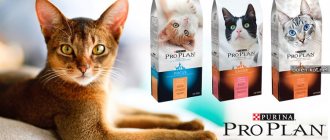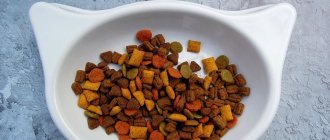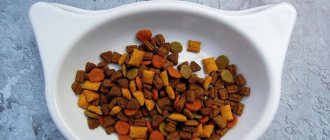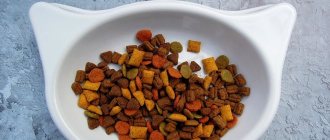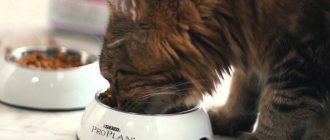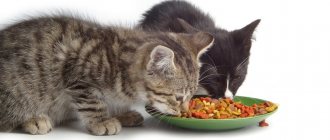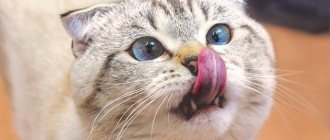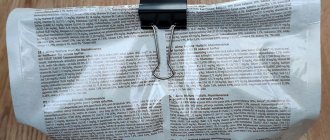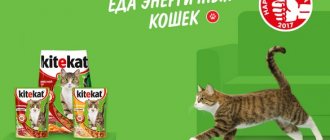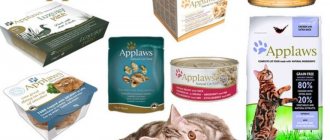The health of cats, like any pet, depends entirely on the care of the owner and his knowledge regarding the rules of keeping and feeding habits of the pet. By studying specialized literature and using the recommendations of veterinarians, you can choose the right optimal diet and understand how to feed your cat.
The importance of proper nutrition
It happens that owners realize the importance of proper nutrition for their pet only when its health begins to deteriorate. In such cases, it is necessary to urgently change her diet, even if it is a little late.
Especially if this happens during a period of intensive growth and development of the cat’s body. A caring and loving owner should know what and how much to feed a cat as soon as he decides to take it into his home.
A properly selected diet and nutrition regimen, organized for a pet from an early age, ensures the animal a long and healthy existence.
Eating improperly leads to problems in the functioning of many organs and systems. The most common complications occur with the following organs:
- Kidneys;
- Gastrointestinal tract;
- Teeth;
- Joints.
Urolithiasis and allergies may also develop.
Why is the lactation period important?
Just like for a woman, the moment of childbirth and the two days after it are not an easy period for a furry pet, because at this time she may lose her appetite. The body begins the process of producing colostrum and then milk, requiring more nutrients than usual. A few days will pass, and the cat's appetite will be restored. Kittens come to nurse approximately every two hours. To accumulate full-fledged milk in sufficient quantities, you need special nutrition. Therefore, it is important to know how to feed your cat correctly.
Babies nurse until about eight weeks of age, so during this period the furry mother has high energy needs. After this, the body begins to restore its own strength.
Feeding frequency
Proper nutrition includes not only balanced food, but also optimal feeding frequency. The pet’s mood and the health of its body depend on the daily norm. Feeding at regular times reduces the risk of obesity and normalizes digestion.
In addition, with a strict food intake regime, you can assess the cat’s appetite and then make adjustments to the amount of food consumed. In addition, dispensing feed at the scheduled time will prevent food spoilage, especially in hot weather.
How many times a day should you feed your cat?
- At the age of 2 to 3 months - 4-5 times (180-200 g);
- From 4 to 5 months - 3-4 times (240 g);
- From six months - 3 times (240 g);
- Adults - 2 times (200–250 g).
Hygiene and health
What to feed a dog after giving birth so that there is milk
Approximately 1.5-2 weeks after birth, the cat experiences bloody discharge with clots. This is how her uterus is cleansed. The cat is a clean animal and takes care of its hygiene on its own, trying not to dirty the litter and kittens. However, sometimes she needs the help of her owner.
After childbirth, you need to monitor the condition of your nipples. If they turn red, become cracked and fester, the animal must be shown to a veterinarian.
Ready food
At the moment, there are many different ready-made foods; most owners choose this particular feeding option.
- Since not everyone has time to prepare healthy food from natural products.
- In ready-made food, all ingredients are balanced and provide everything necessary for the pet’s body.
Liquid
During lactation, liquid plays the main role in a cat's body, so there should always be a bowl of water for it. It must be clean and fresh. It is advisable to pass the water through household filters or leave it for 24 hours. Giving boiled water is not recommended. It has a reduced salt content, so drinking it regularly deteriorates the animal’s tooth enamel.
During this period, it is very important to consume milk and fermented milk products (kefir, yogurt, fermented baked milk). Often, even cats that are indifferent to dairy products during normal times drink them with pleasure during the lactation period. As a liquid, a nursing cat can use broth cooked with lean meat (beef, veal, turkey, chicken). It should be without salt and spices. To improve lactation, it is better to give the broth warm.
Dry food
Ready-made foods produced by different companies have different nutritional properties. Most often, the packaging indicates the weight and age of the pet for which the food is intended, as well as the recommended amount of the product.
Dry food mainly consists of a mixture that includes:
- Meat products;
- Cereals;
- Plant products.
All this is dried using a special method. This food is very convenient because you can safely leave it in a bowl if the cat is left at home alone for a long time. There is no way to visually determine the composition of the granules. Therefore, when choosing a brand of food, you need to know the product category and give preference to premium and super-premium.
Wet food
They can be in the form of pouch bags and canned food with pate or stew.
- Pouches are sold in bags of 85 and 100 g.
- The food in them consists of pieces of meat in sauce, with the addition of cereals and plant products.
In addition to vegetables, fish and meat, the products contain added vitamins and minerals. Therefore, this food is a complete nutrition of proper quality.
Daily norm
Conscientious food manufacturers indicate on the packaging information about the recommended daily intake, which depends on the weight and age of the pet.
It is worth noting that if the norm is small, then the product is saturated with nutrients. The average volume of wet food is 5% of the pet’s weight.
Approximately how many times per day to feed an adult cat with ready-made food based on the weight of the animal:
- Up to 3kg - 25g;
- From 3 to 4 kg - 40g;
- From 4 to 5 kg - 55–65 g;
- From 5kg - 12g per 1kg of weight.
Kittens that weigh less than two kilograms per day need 35 grams of food, and those weighing from 2 to 3 kg need 50 grams of food.
For pregnant and lactating cats, the amount of food should be doubled. That is, if a female weighs 4-5 kg, then she will need 100–130 g per day.
When switching your pet to another type of food, you need to gradually mix a new one into the usual food, each time increasing the volume of the new food.
How to feed a cat if he doesn't eat
When a cat is healthy and feels comfortable living in a house with its owners, there is no reason to force it to eat. Sometimes a pet is so passionate about getting food that it begs for it even more often than it really needs it. Typically, such cats always have a variety of food in their bowl, which they do not even eat completely. Therefore, an animal in normal health will always be interested in getting more goodies, and there will be no reason to force it to eat food.
Causes of decreased appetite in cats
If a beloved domestic cat suddenly stops eating well or refuses to eat at all, this immediately alerts the owners. The reasons that a pet does not eat food can be different. The most common reason is that the cat is overfed and his body requires unloading. This is the most harmless reason, which usually does not bring with it any bad consequences. But most often, cats eat poorly due to weakness and malaise, a clogged nose (the animal cannot smell the food), and also due to stress. Stress can be caused by a sudden rearrangement of furniture, moving, or lack of attention to the animal.
A caring owner will immediately discover that something is wrong with the cat if he has not touched food for a whole day. When a cat does not eat for more than two days, this is an indicator of a serious illness that needs to be treated. The most unpleasant thing is when a pet refuses food and water completely. He may lose serious weight and become very weak. This cannot simply be left alone, which is why veterinary practice often resorts to force-feeding animals.
Force feeding
In this case, you cannot think that the cat will start eating on its own in a couple of days. Most likely, he will need serious help and should be seen by a doctor as soon as possible. The most important thing is to understand why the animal stopped eating, became lethargic, and lost interest in life.
It is important to carry out all the necessary studies and even an ultrasound of the abdomen, since refusal to eat can be caused by abdominal pain, dysfunction of organs, as well as abscesses in the oral cavity. Force feeding includes:
Special diets
The result of the examination allows the doctor to immediately prescribe proper nutrition, a diet that will need to be strictly followed. But if the cat already eats poorly, then specialized food is unlikely to be to his taste. If a very small kitten is sick, you will even have to wake him up specifically to feed him. Alternatively, you can try finger feeding your baby, but you need to do it carefully, do not push your finger down his throat, and be a little more patient. Then the kitten will lick the food itself.
It is worth knowing that a very small kitten, which is not yet six months old, will not live even a day without food. Therefore, along with patience, you need to be persistent if you want to help your baby survive. An adult cat can live for two days, but this is all relative, because there are different diseases, more complex and milder.
Syringe feeding
For syringe feeding, the doctor prescribes veterinary pates, which are well diluted with water. If the food is dry, it needs to be soaked only with boiled, warm water. Before you start feeding, the food itself also needs to be warmed up, because it is its warm state that increases the aroma and can entice the kitten to try it. To force-feed your pet through a syringe, you need to hold the kitten by the head and gradually introduce food with a syringe without a needle.
Feeding solid foods
You need to watch the cat for a while. If the body positively perceives the portion of food that it managed to inject by force through a syringe, then over time you can give it more. If the diet is not too strict, then you can switch to homemade food - semolina, warm broths, dairy products. If, after a couple of days of feeding, the cat still does not eat on its own, then you can also force-feed it, but use solid food for this.
You can use regular food for adult animals and kittens, but soak it a little in milk to make it easier to swallow. Suitable pieces of boneless fish, minced meat, soft pieces of white bread. To do this, you need to take the cat under your left hand, unclench its teeth, and push a small piece from the side with your right hand. Then help her clench her jaws - most likely the cat will swallow the food. You should never mix medications into food - the animal will hear a foreign smell, and this may further discourage it from eating.
In order for the cat to recover quickly and begin to eat on its own, it is advisable to accompany each meal with pleasant emotions - talk to it affectionately and stroke it. Then your pet’s health will improve faster.
Natural diet
It is not easy to create a complete diet from natural products; this requires following some rules and being patient.
- Cats are naturally conservative, so they do not require a varied diet.
- Once you set the correct diet, you can use it constantly.
It is worth considering that to maintain and preserve the health of the animal, free access to water is very important, which needs to be changed twice a day.
What foods can be given?
If the owner of a furry mother does the cooking himself, then it is important to know how to feed the cat properly and create a balanced menu. To do this, you need to think over a list of necessary products.
Protein is the main building material of cells. Therefore, the diet should contain foods containing it. Lack of protein can cause serious pathologies, such as rickets.
During pregnancy and lactation, a cat loses a lot of calcium, and its lack can cause muscle spasms and seizures, sometimes leading to death. It is extremely important in the furry mother’s diet to contain foods rich in this mineral.
Thus, the diet must include the following foods:
- meat (beef, lean pork, veal, poultry) and offal;
- sea fish, especially salmon and sardines;
- meat broth;
- milk and fermented milk drinks (yogurt, fermented baked milk, kefir);
- cottage cheese, cheese;
- cream with a fat content of no more than 10%;
- cereals;
- various vegetables, especially carrots, cabbage;
- egg.
During this period, it may be necessary to use vitamin preparations. They must be prescribed by a veterinarian.
Water in the diet
Water should be present in the bowl at all times, and it should be clean, especially if the pet eats dry food.
- With a natural diet, the cat requires less fluid, but still needs it.
- You can determine whether your pet has enough fluid by looking at its fur and the frequency of urination.
If the coat is silky and shiny, and its owner is active and empties at least twice a day, then this means that the diet contains enough fluid.
Example of an optimal menu
If you are short on time, you can prepare mixtures that are sufficiently nutritious and balanced in advance and freeze them. There are recipes approved by experts, of which the most simple ones can be distinguished.
From meat, buckwheat or rice and vegetables:
- Beef - 2kg;
- Vegetables - 500 g (they are boiled separately).
- Cereals - 200g;
Grind everything in a meat grinder and freeze in portions.
From chicken fillet:
- Chicken fillet - 1 kg;
- Vegetables - 150g.
- Boiled rice - 100g;
Pass everything through a meat grinder, form into balls and boil. After the meatballs have cooled, they need to be frozen.
In addition to main dishes, a cat’s daily diet should include about 30 grams of fermented milk products.
The choice of type of feeding for a pet depends on the owner, his capabilities and preferences. Each food has its own advantages and disadvantages. A caring owner will, if desired, find the best option for his pet.
Features of the aging process
Aging is a process that is a set of unfavorable changes in the body, as a result of which the risk of cell death, tissue destruction and, ultimately, the death of a living being increases. This process is individual for each animal, although it has common features. For example, the “transience” of old age depends on many factors, such as genetics, ecology, quality of food and life, and many others. At the micro level, degradation manifests itself as disruption of cell function under the influence of free radicals, which leads to suppression of immune function, aging of genes and changes in chromosomes.

